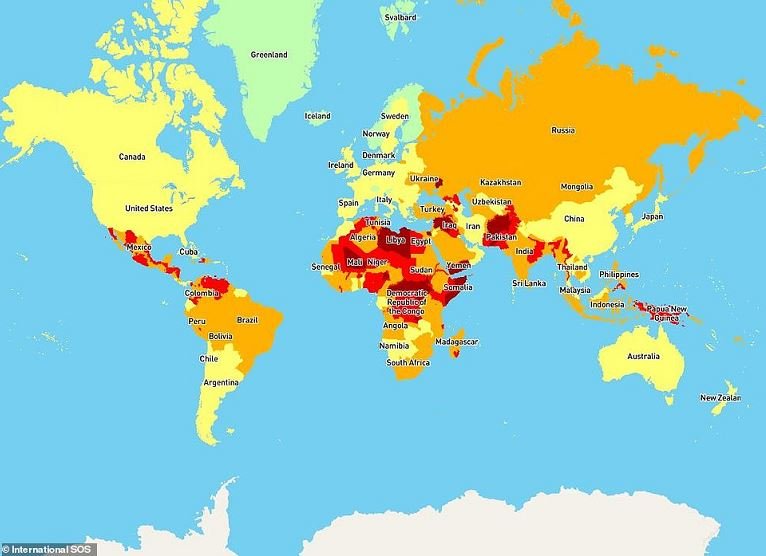Nigeria has been listed in the 2020 report of the most dangerous countries in the world because of the insurgency in the northeast of the country.
According to a new map designed for travellers that alerts them to risks abroad, Libya and Somalia are the most dangerous places on earth for 2020.
The interactive ‘Travel Risk Map’ reveals the countries where people are most likely to have trouble when it comes to road safety, security and medical matters.
The safest places have been labelled as Finland, Norway and Iceland – all Nordic countries.
The map has been launched by international medical and security specialists International SOS.
Libya and Somalia both rank lowly in each of the three categories along with Afghanistan and Venezuela, meaning they are the most dangerous.
In contrast, Norway, Finland and Iceland are all labelled as having a low risk of medical problems, security and road safety issues, meaning they are the safest – along with the likes of Sweden and Greenland.

When it comes to health, countries with the highest risk of contracting medical issues or disease include African nations Niger, Guinea, Sierra Leone, Liberia, South Sudan, Eritrea and the Central African Republic.
Yemen is also was also labelled a high risk country when it came to health along with Syria and North Korea.
At the opposite end of the ranking, places with a low risk of disease are most of those in Europe, Canada, the US, New Zealand, Australia, South Korea and Japan.
For security, countries with an extreme risk to safety include Afghanistan, Syria, Yemen, Iraq, Somalia, Libya and parts of Nigeria.
Places, where security risks are deemed insignificant, are Norway, Greenland, Finland, Iceland, Switzerland and Slovenia.
When it comes to road safety, the countries besides those in Africa that pose the greatest risk include Venezuela, Belize, the Dominican Republic, Saudi Arabia, Thailand and Vietnam.
Most of Europe is ranked as having a low risk, along with Japan, Australia and New Zealand.
Alongside the Travel Risk Map, the Ipsos MORI ‘Business Resilience Trends Watch 2020’, also found that 47 per cent of business travellers expect travel risks to increase in next year.
This is down from 51 per cent predicting risk increase in 2019.
Doug Quarry, MD at International SOS, said: ‘The threats facing organisations and their workforces are impacting established and emerging economies alike. It’s encouraging to see that decision makers are becoming increasingly aware of the threats of epidemics and infectious diseases.
“With over $1.7trillion expected to be invested by organisations by 2022, without taking into account human capital and productivity impacts of travel disruption, it’s important that organisations get ahead of whatever potential disruption they can.
“With accurate information, tools and support in place, organisations should, and can, plan for the anticipated risks and safeguard their investment and their people.”











